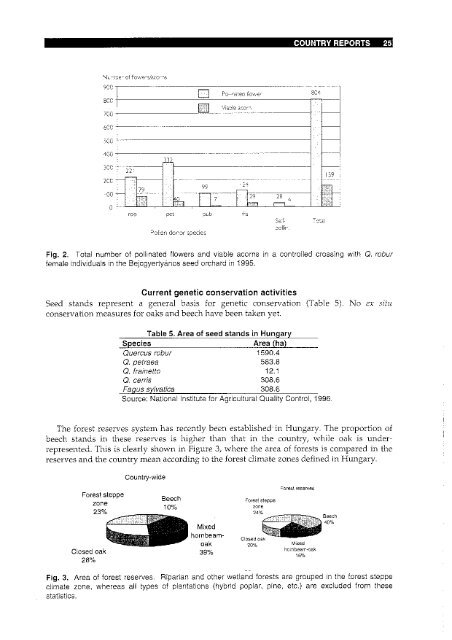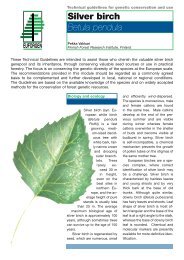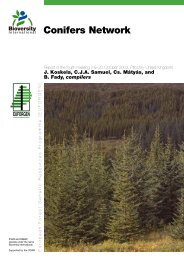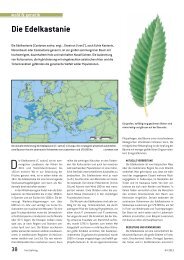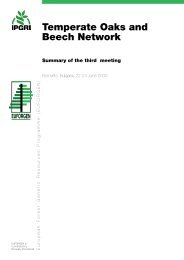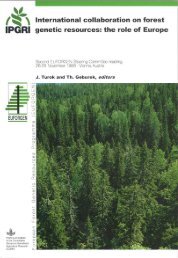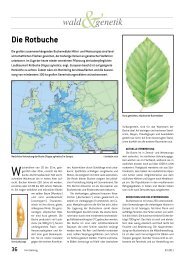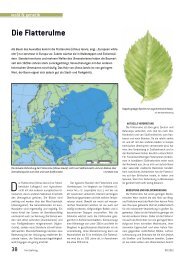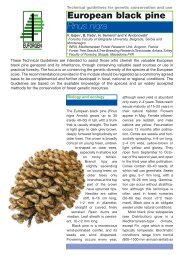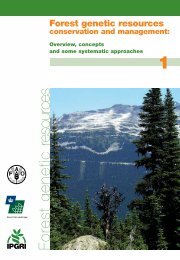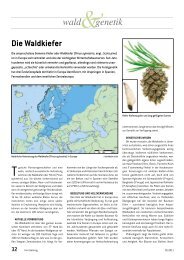Download PDF - Euforgen
Download PDF - Euforgen
Download PDF - Euforgen
Create successful ePaper yourself
Turn your PDF publications into a flip-book with our unique Google optimized e-Paper software.
GOUNTR¥ REPORTS 25<br />
N umber of flowers/acorns<br />
900,---------------------------------------------------,<br />
Pollinated flower 804<br />
800+------------------=~----------------------~~--~<br />
700+------------------<br />
600+-----------------------------------------~<br />
500+-----------------------------------------~<br />
400+-----------------------------------------~<br />
300 +----------1<br />
200<br />
100<br />
0+-'----""<br />
rob pet pub fra<br />
Pollen donor species<br />
Selfpollin.<br />
Total<br />
Fig. 2. Total number of pollinated flowers and viable acorns in a controlled crossing with O. robur<br />
female individuals in the Bejcgyertyanos seed orchard in 1995.<br />
Current genetic conservation activities<br />
Seed stands represent a general basis for genetic conservation (Table 5). No ex situ<br />
conservation measures for oaks and beech have been taken yet.<br />
Table 5. Area of seed stands in Hungary<br />
Species<br />
Area (ha)<br />
Ouercus robur 1590.4<br />
Q. petraea 583.8<br />
Q. frainetto 12.1<br />
Q. cerris 308.6<br />
Fagus sylvatica 308.6<br />
Source: National Institute for Agricultural Quality Control, 1996.<br />
The forest reserves system has recently been established' in Hungary. The proportion of<br />
beech stands in these reserves is higher than that in the country, while oak is underrepresented.<br />
This is clearly shown in Figure 3, where the area of forests is compared in the<br />
reserves and the country mean according to the forest climate zones defined in Hungary.<br />
Country-wide<br />
Forest steppe<br />
zone<br />
23%<br />
Closed oak<br />
28%<br />
Beech<br />
10%<br />
Mixed<br />
hornbeamoak<br />
39%<br />
Forest steppe<br />
zone<br />
Forest reserves<br />
20% Mixed<br />
hombeam-oak<br />
16%<br />
Beech<br />
40%<br />
Fig. 3. Area of forest reserves. Riparian and other wetland forests are grouped in the f,orest steppe<br />
climate zone, whereas all types of plantations (hybrid poplar, pine, etc.) are excluded from these<br />
statistics.


